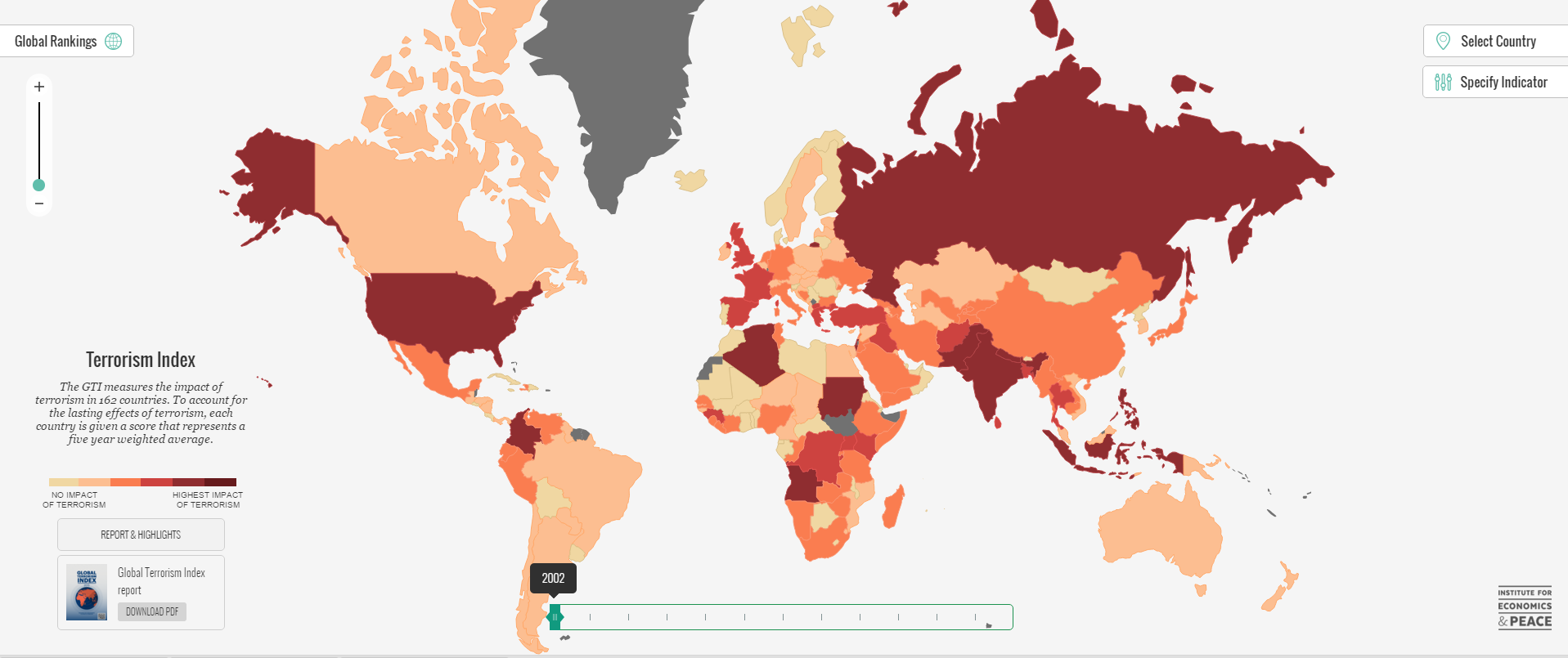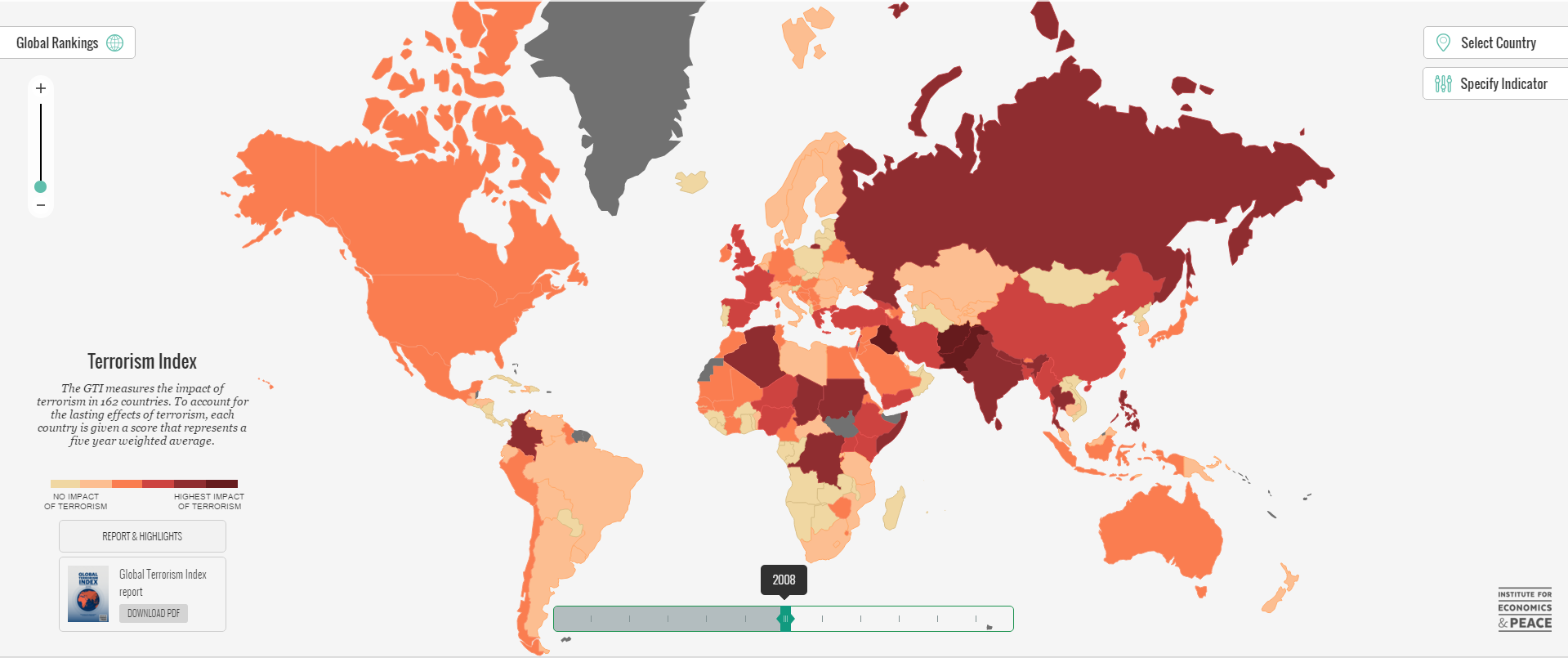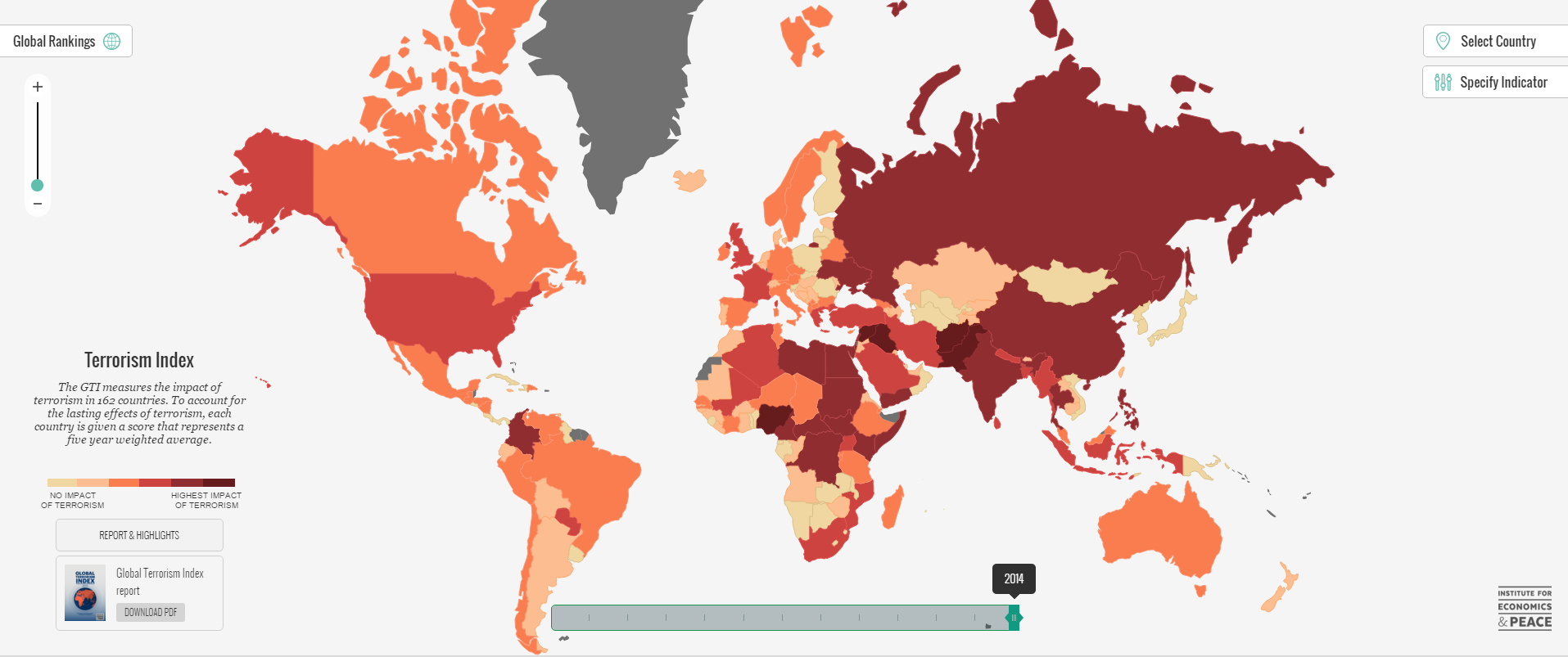How has terrorism changed since 2000?

Since the turn of the century, the terrorist threat has been growing. Image: A Ukrainian soldier stands guard at a military camp on a field the Ukrainian Army forces set up close to the Russian border in east Ukraine March 21, 2014. REUTERS/Yannis Behrakis.
As one attack after another dominates international headlines – from Al Qaida's strike on the Ivory Coast to the Turkish city of Ankara, where at least 32 people have died in the second car bomb in under a month – 2016 already reflects the changing nature of global terrorism.
The impact of terrorism has increased significantly since 2000, according to Vision of Humanity’s Global Terrorism Index 2015. There has been a more than ninefold increase in deaths from terrorism during this time – from 3,329 at the turn of the century, to 32,685 in 2014. From 2013 to 2014 alone, there was an 80% increase in deaths.
The year 2014 was the worst on record for terrorism across the globe.
Terrorism remains highly concentrated in just five countries – 78% of deaths in 2014 were in Iraq, Nigeria, Pakistan, Afghanistan and Syria. However, the report argues that the impact of terrorism is spreading. In 2013, five countries experienced more than 500 deaths; in 2014 this number rose to 11. Sixty-seven countries experienced at least one death from terrorism last year – up from 59 the previous year.
The index includes an interactive map highlighting the impact of terrorism around the world. What does this tell us about the changing global situation?

This first map shows the situation in 2002. Areas highly impacted by terrorism include the United States, Russia and India. These nations were three of the top five most affected, alongside Colombia and Algeria.

By 2008, a different global picture has emerged. The impact has declined in the US, but across much of the rest of the world, especially in Africa and Asia, we see an increase. The top five most impacted countries have also changed significantly. In 2008 they were Iraq, Pakistan, Afghanistan, India and Sri Lanka.

In 2014 the increase in darker areas highlights the spreading impact of terrorism, noticeably in northern and central Africa. Europe has also been more severely afflicted by terrorism since 2008. The top five most affected countries by 2014 are Iraq, Afghanistan, Nigeria, Pakistan and Syria.
The series of maps highlights the changing impact of terrorism across the world. The three maps reinforce the report’s conclusions: terrorism is today more serious and more widely distributed across the globe than at the turn of the century.
Don't miss any update on this topic
Create a free account and access your personalized content collection with our latest publications and analyses.
License and Republishing
World Economic Forum articles may be republished in accordance with the Creative Commons Attribution-NonCommercial-NoDerivatives 4.0 International Public License, and in accordance with our Terms of Use.
The views expressed in this article are those of the author alone and not the World Economic Forum.
Stay up to date:
Drivers of War
Related topics:
Forum Stories newsletter
Bringing you weekly curated insights and analysis on the global issues that matter.
More on Geo-Economics and PoliticsSee all
Isabel Cane and Rob Strayer
November 13, 2025






